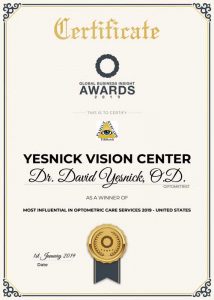 First, 3D Printed Human Cornea - UK Scientists
First, 3D Printed Human Cornea - UK Scientists
The most advanced artificial cornea ever has been created by scientists using 3D printing and human stem cells. This was done by scientists at Newcastle University in the United Kingdom. The technology, if successfully developed, should be able to help millions of people around the world get a better vision.
The research, which was published in Experimental Eye Research, reports how human corneal stromal cells from the cornea of a healthy donor were mixed together with alginate and collagen to create a ‘bio-ink - a solution that could be printed.
The bio-ink was successfully extruded in concentric circles to form the shape of a human cornea using a simple low-cost 3D bio-printer. The printing took less than 10 minutes. The stem cells after the printing were then shown to culture.
According to Che Connon, Professor of Tissue Engineering at Newcastle University and the research team lead, many teams across the world have been chasing the ideal bio-ink to make this process feasible. “Our unique gel – a combination of alginate and collagen – keeps the stem cells alive whilst producing a material which is stiff enough to hold its shape but soft enough to be squeezed out the nozzle of a 3D printer.” He said.
The experiment was built upon the scientists’ previous works in which cells were kept alive for weeks at room temperature and within a similar hydrogel. But with the now available bio-ink containing stem cells, users can now print tissues without having to worry about growing the cells separately. The scientists also demonstrated that they could build corneas that match the unique specifications of patients.
They originally took the dimensions of the printed tissue from an actual cornea by scanning a patient’s eye and using the data to rapidly print a cornea that matched the size and shape.
Professor Connon further added that the 3D printed corneas will undergo further testing and hope to be able to use them for transplants after several years of testing. However, the experiment has proven that it is feasible to print corneas using coordinates taken from a patient eye and that the approach has potential to combat the worldwide shortage of corneas.
About 10 million people worldwide are known to require preventive surgery to avoid corneal blindness resulting from diseases such as trachoma, an infectious eye disorder. About 5 million people also suffer total blindness due to corneal scarring caused by burns, lacerations, abrasion or disease. The significant shortage of corneas available for transplant will worsen their situation and increase the number.
Dr. Yesnick is a low vision doctor based in Las Vegas and welcomes patients from all over Las Vegas and environs to come in for comprehensive eye exams, treatments, and fitting of contacts, lenses and other devices that will help improve your vision. You are sure of a superfast attention and optical consultation upon your visit.


